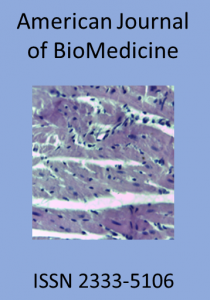Abstract
A case study of a fifty-six-year-old woman diagnosed with asthma is presented. Her medications included inhaled corticosteroids, long-acting beta agonists, 2-adrenergic receptor agonists, and montelukast. After a month of treatment with fluticasone propionate, a hand-foot lesion occurred. The lesion in the fuzzy area of the foot and palm is recurrent and itchy. A literature search found fluticasone propionate linked to contact dermatitis. Patch testing confirmed a hypersensitivity reaction to fluticasone propionate. Fluticasone propionate was withdrawn, and alternative medications were prescribed. The paper discusses the need for allergy testing in patients with similar side effects and highlights the adverse effects of fluticasone propionate. A fifty-six-year-old woman diagnosed with asthma twenty years ago presented to the chest clinic with complaints of recurrent wheezing and breathlessness for the past three months. Her medications included: inhaled corticosteroids: fluticasone propionate (250 mcg, 2 puffs, twice daily)/seretide (250 mcg, 2 puffs, twice daily); long-acting beta agonists: salmeterol (50 mcg, 2 puffs, twice daily); 2-adrenergic receptor agonists: formoterol (6 mcg, 1 pump, twice daily); and montelukast (10 mg, once at night). During treatment with fluticasone propionate for a month, the patient noticed a reddish round lesion in the fuzzy area of the right foot and palm. The lesion was recurrent and itchy, with papules that ultimately led to desertification. The basal site had a blush after removing a scab. Associated lesions were found on the left side, indicating the lesion was not a fungal infection. The lesion occurred in the fuzzy area, not in the usual places like the fingers, wrists, or neck. The lesion cleared for six months after stopping the medication. A search of PubMed and Google Scholar was conducted for "fluticasone propionate and hand-foot lesion." Methylprednisolone aceponate and other glucocorticoids were temporarily linked to cutaneous granuloma annulare. Fluticasone propionate was searched by "hand-foot lesion and fluticasone," which returned zero results. A search by "hand-foot lesion and propionate" also returned zero results. However, "fluticasone and contact dermatitis" returned seven results.
Keywords: Painful lesion; Aciclovir; Hand and foot; Erythematous papules; Entro-virus
Copyright © 2015 by The American Society for BioMedicine and BM-Publisher, Inc.
References
-
Tsao KC, Chang PY, Ning HC, Sun CF, Lin TY, Chang LY, et al. Use of molecular assay in diagnosis of hand, foot and mouth disease caused by enterovirus 71 or coxsackievirus A 16. J Virol Methods 2002;102:9–14. [PubMed]
-
Chang LY, Lee CY, Kao CL, et al. Hand, foot and mouth disease complicated with central nervous system involvement in Taiwan in 1980-1981 . J Formos Med Assoc 2007;106:173–176. [Abstract]
-
Chan LG, Parashar UD, Lye MS, et al. Deaths of children during an outbreak of hand, foot and mouth disease in Sarawak, Malaysia: clinical and pathological characteristics of the disease. For the Outbreak Study Group. Clin Infect Dis 2000;31:678– 683. [Abstract/FREE Full Text]
-
Puenpa J, Chieochansin T, Linsuwanon P, Korkong S, Thongkomplew S, Vichaiwattana P, Theamboonlers A, Poovorawan Y. Hand, foot, and mouth disease caused by coxsackievirus a6, Thailand, 2012. Emerg Infect Dis 2013;10:641–643. [PMC free article] [PubMed] [Cross Ref]
-
Wu Y, Yeo A, Phoon MC, Tan EL, Poh CL, Quak SH, Chow VT. The largest outbreak of hand; foot and mouth disease in singapore in 2008: the role of enterovirus 71 and coxsackievirus a strains. International journal of infectious diseases: IJID: official publication of the International Society for Infectious Diseases. 2010;10:e1076–e1081. [PubMed]
-
Flett K, Youngster I, Huang J, McAdam A, Sandora TJ, Rennick M, Smole S, Rogers SL, Nix WA, Oberste MS. et al. Hand, foot, and mouth disease caused by coxsackievirus a6. Emerg Infect Dis. 2012;10:1702–1704. [PMC free article] [PubMed]
-
Siegel JD, Rhinehart E, Jackson M, Chiarello L. 2007 Guideline for isolation precautions: preventing transmission of infectious agents in health care settings. Am J Infect Control. 2007;35(Suppl 2):S65–164. [PubMed]
-
Osterback R, Vuorinen T, Linna M, Susi P, Hyypia T, Waris M. Coxsackievirus A6 and hand, foot, and mouth disease, Finland. Emerg Infect Dis. 2009;15:1485–8.10.3201/eid1509.090438 [PubMed]
-
Lo SH, Huang YC, Huang CG, Tsao KC, Li WC, Hsieh YC, et al. Clinical and epidemiologic features of coxsackievirus A6 infection in children in northern Taiwan between 2004 and 2009. J Microbiol Immunol Infect 2011;44:252–7. [PubMed] [Cross Ref]
-
Guimbao J, Rodrigo P, Alberto MJ, Omenaca M Onychomadesis outbreak linked to hand, foot, and mouth disease, Spain, July 2008. Euro Surveill 2010;15:19663. [PubMed]
-
Wu Y, Yeo A, Phoon MC, Tan EL, Poh CL, Quak SH, et al. The largest outbreak of hand; foot and mouth disease in Singapore in 2008: the role of enterovirus 71 and coxsackievirus A strains. Int J Infect Dis 2010;14:e1076–81. [PubMed]
-
Blomqvist S, Klemola P, Kaijalainen S, Paananen A, Simonen ML, Vuorinen T, et al. Co-circulation of coxsackieviruses A6 and A10 in hand, foot and mouth disease outbreak in Finland. J Clin Virol 2010;48:49–54. [PubMed]
-
Cabral LA, Almeida JD, de Oliveira ML, Meza AC Hand, foot, and mouth disease case report. Quintessence Int 1998;29:194–6. [PubMed]
-
Peltola V, Waris M, Österback R, Susi P, Ruuskanen O, Hyypiä T Rhinovirus transmission within children: incidence of symptomatic and asymptomatic infections. J Infect Dis 2008;197:382–9.[PubMed] [Cross Ref]
-
Bernier V, Labrèze C, Bury F, Taïeb A Nail matrix arrest in the course of hand, foot and mouth diease. Eur J Pediatr 2001;160:649–51. [PubMed]
How to cite this article
Zhang J, tetsenk MH. Hand-foot lesion in old age asthmatic women. American Journal of BioMedicine 2015;3(1):13-29
Case report outline
1. Abstract
2. Keywords
3. Introduction
5. Results
6. Discussion
7. References




